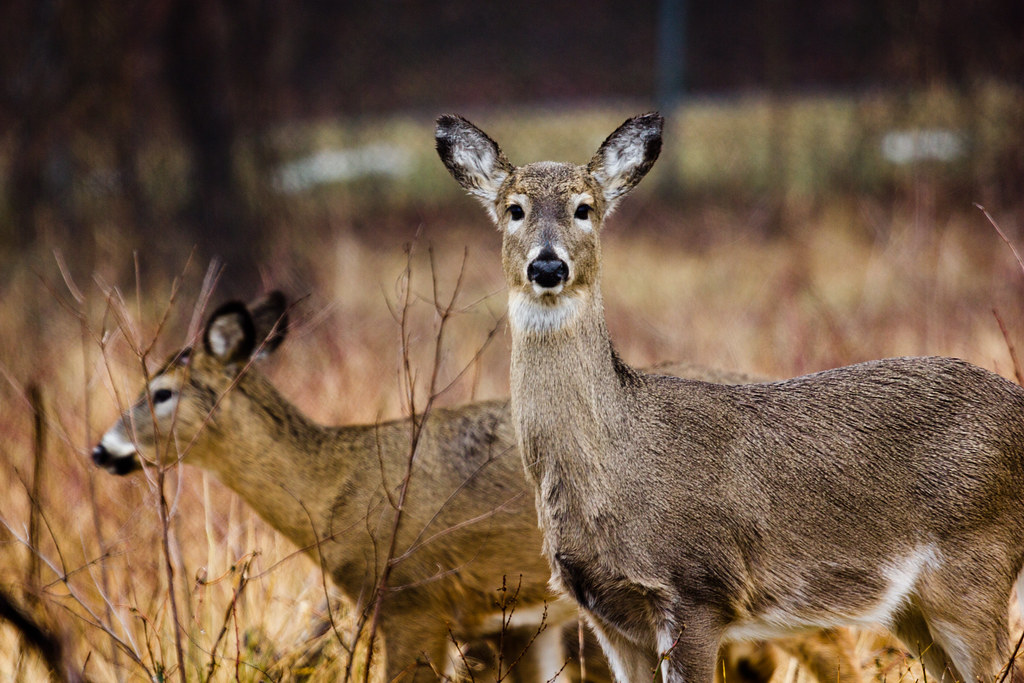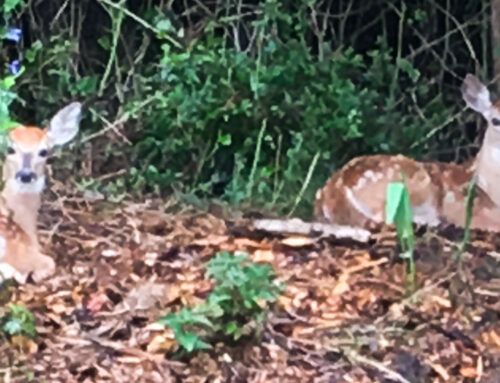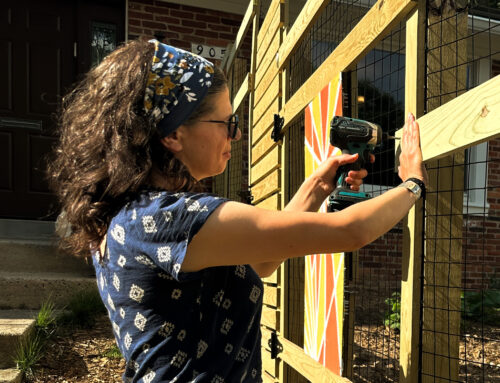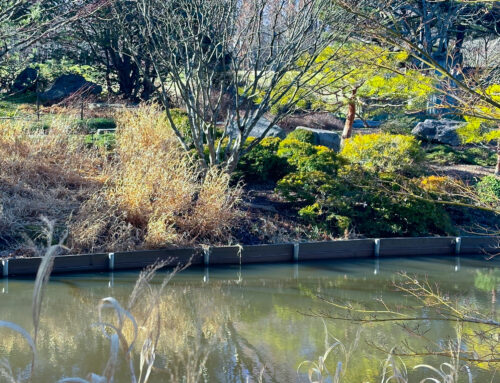עַ֤ד שֶׁיָּפ֙וּחַ֙ הַיּ֔וֹם וְנָ֖סוּ הַצְּלָלִ֑ים סֹב֩ דְּמֵה־לְךָ֨ דוֹדִ֜י לִצְבִ֗י א֛וֹ לְעֹ֥פֶר הָאַיָּלִ֖ים עַל־הָ֥רֵי בָֽתֶר׃ (ס)
When the day blows out gently
And the shadows flee,
Turn about, my beloved and be
as a gazelle or a fawn on the hills of spices!
Song of Songs is spring in glorious, full and sweeping poetry. It is an explosion of pent up energy, of longing, flowering, growth and life pulsating in full color. This heady mix is framed as a romance and often understood as a spiritual allegory. The beloved, in this extended poem, is compared to a צְבִ֗י א֛וֹ לְעֹ֥פֶר הָאַיָּלִ֖ים. To a Tzvi or an Ofer Hayalim. Growing up, I always thought the Hebrew word for Deer was צְבִ֗י, or Tzvi, but it turns out צְבִ֗י is a gazelle, and also a term denoting beauty. It is the עֹ֥פֶר הָאַיָּלִ֖ים who turns out to be the deer fawn. Either way, I still love this line – you can feel the breeze at sunset as the gazelle/fawn bounds off into the distance and vanishes.
The deer in my backyard though, do no such thing. There is a spot in my backyard that they particularly like on sunny winter days. Catching one sitting there in repose is sweet, but also a little unsettling. On a short run yesterday about ten seemed to congregate at various points along my path. As I neared, they each gave me the classic “deer in the headlights” look and didn’t budge till I got close enough that they had to move to avoid an outright collision. Then they would simply hop aside about twenty feet and keep grazing. They seemed more like slim cows than the deer fawn of the Song of Songs.
The problem is, here in Maryland, the deer have virtually no predators, save an occasional cull. So, while forests shrink, the deer population continues to grow, and the deer need something to eat. Cue your favorite heirloom Hydrangeas. A bunny has the good grace to hop away if you approach, but not a deer.
However, while many gardeners tell me the deer eat “everything,” this isn’t actually true. There are plants they don’t like and there are plants they hate. Even facing the heavy “deer pressure” obviously present in my neighborhood, there are some beautiful unfenced gardens.
You can have a garden in deer country. You can even grow things you want to eat, but you have to strategize.
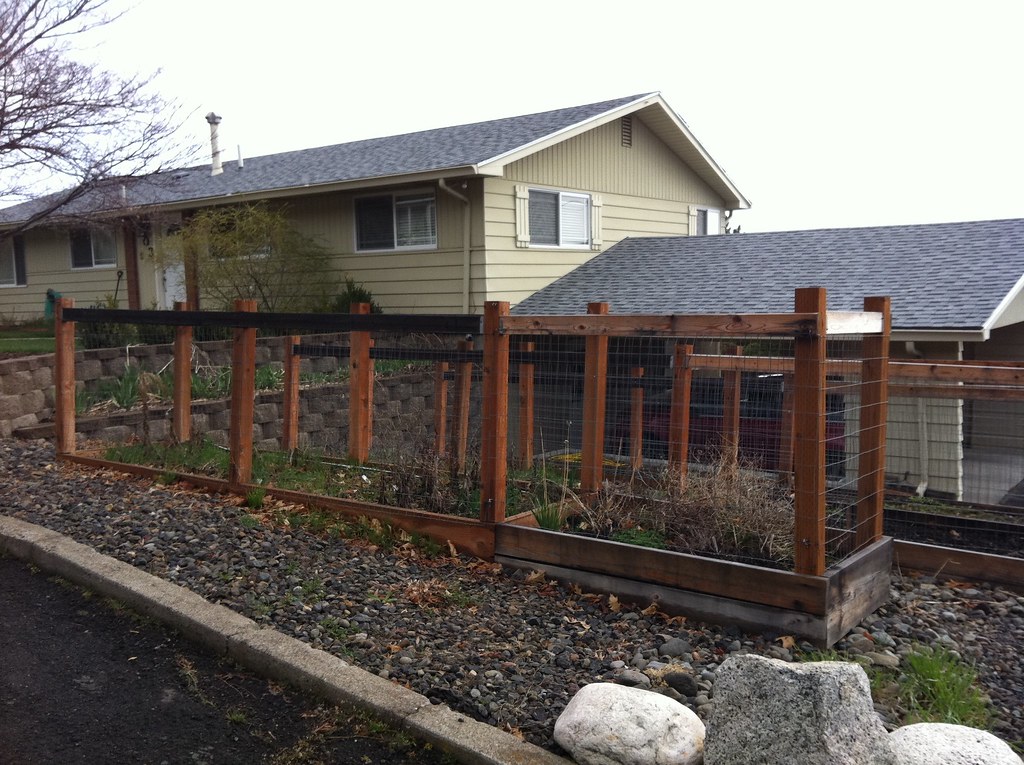
Raised bed with deer fence
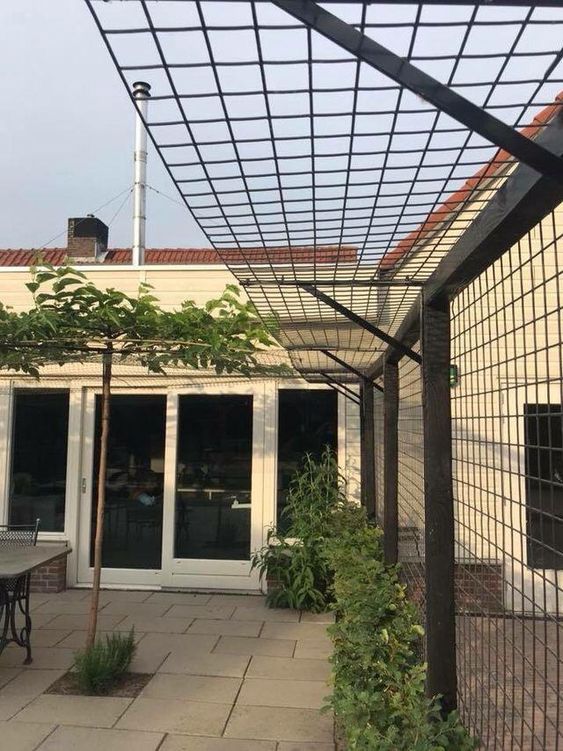
L shaped fence
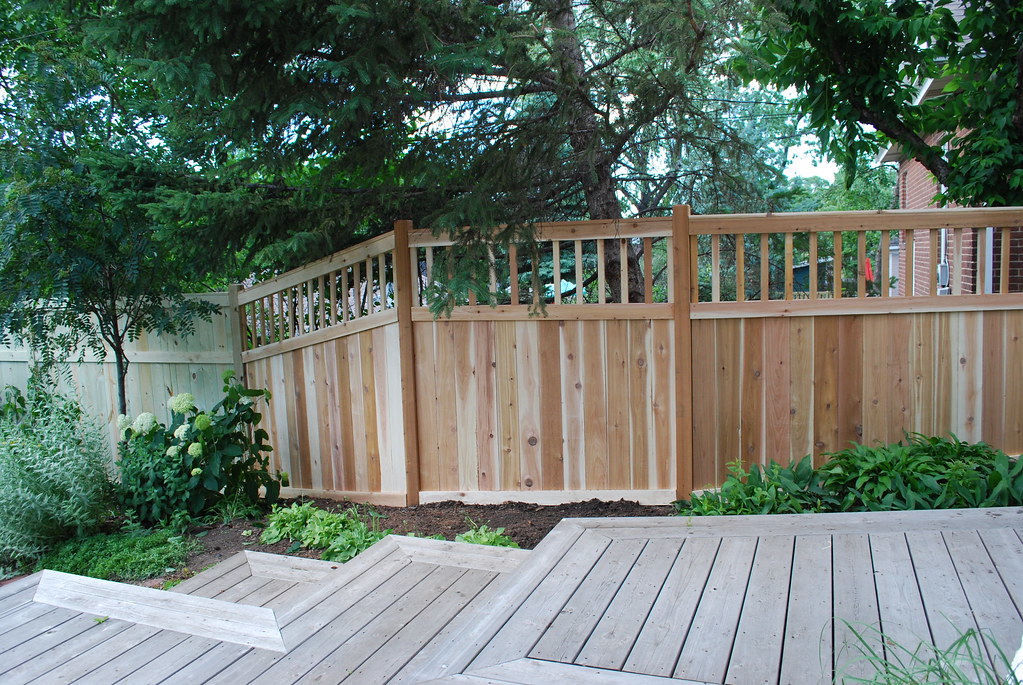
Solid Deer Fence
Exclusion
Let’s begin with deer exclusion. This is the only option if you are hoping to plant vegetables, or your favorite heirloom Roses, which I found out, to my dismay, are a deer favorite snack food. Most research shows deer can easily clear a 7’ fence, though usually they don’t jump that high unless being chased, or the garden on the other side looks particularly delicious. Still, deer exclusion typically requires an 8’ fence.
An 8’ fence is a game changer. You can plant whatever you want and the deer are unlikely to bother you. There are many deer fence kits available that allow you to stake out a welded wire or plastic mesh fence around your property. The posts are metal and often do not require concrete foundations. This is a great option if you are more worried about deer than aesthetics. The kits claim the fences are not noticeable, but in my opinion, they most certainly are. They look somewhat institutional or industrial.
No one says you need to use this kind of fence though. You can build your fence out of lumber. Just make sure it’s 8’ tall and dense enough the deer can’t squeeze through or under it. Add some extra protection at the bottom for groundhogs and rabbits, but we’ll save that topic for another time.
This can, of course, get expensive and sometimes 8’ isn’t even an option.
Let’s say, you live in Montgomery Country and your fence happens to be in your front yard, where it cannot exceed 6’6” in height. What can you do?
There are few options here.
- A 6’ tall opaque fence: Deer apparently don’t like jumping over a fence if they can’t see the other side. So you can keep this kind of fence to 6’. If you like your privacy, this is great, but you might shade out portions of your garden, so plan accordingly. It is also, probably, the most expensive option.
- According to the New York Botanical Garden, another effective option is a slanted fence that is set up at a 45 degree angle. It should be 4 feet wide and 6 feet tall. This works, according to multiple studies, but it’s a little weird looking in a residential front yard.
- Alternatively you can use a double fence. Two fences 4 feet tall separated by a space of 4 feet. The idea here is that a deer is able to jump high, but doesn’t like to jump both high and wide, or to be caught between two layers of fencing with no way to jump out. According to a University of Minnesota extension study- a 16’ x 16’ enclosure that is 6’ heigh is effective in excluding deer. (https://extension.umn.edu/central/protecting-plants-deer) Another option is to string a second fence made up of poles and strings a few feet outside the taller fence to prevent deer from attempting the jump. (https://extension.oregonstate.edu/gardening/techniques/how-keep-deer-away-when-garden-fence-isnt-practical)
- Cantilevered fence- this kind of fence can be about 6’ tall but has a cantilevered portion at the top that is 3’ wide and prevents the deer from jumping both up and over. (https://www.landscapingnetwork.com/fencing/deer.html)
Plant Selection
OK, but how about those areas of the garden that you do not want to fence, or can’t fence? You can just do lawn of course. Deer leave lawn pretty much alone, and may even weed it for you. You can also seek out deer resistant plants. The complication here is that deer resistant plants aren’t necessarily groundhog and rabbit resistant, but thankfully, there is a lot of overlap between these animals favorite snack foods.
An excellent resource is The Perennial Farm’s online catalogue (theperennialfarm.com). It lists each plant with a deer resistance rating. This allows you to pick plants that are more likely to survive. Deer resistant plants are rated from 1-3 with 1 being more or less unpalatable to deer and 3 being the equivalent of the carrots on my son’s plate, edible in a pinch, but not a first choice. In my backyard, where the deer tend to congregate, I try to stick to plants in the 1 category with occasional attempts at the 2 category if I’m feeling experimental.
As a rule, deer prefer not to eat things that are fuzzy or smelly. Thankfully smells they don’t like are often smells we love, such as lavender, oregano, etc…. They don’t mind thorns though, which is unfortunate for roses.
After doing some plant research, touring the neighborhood to see what has made it, and taking as few risks as possible, here’s what I’m going to try this year in the sunny side of my garden:
Yucca filamentosa – This broadleaf evergreen has strappy leaves and grows 3-4’ tall and wide. It is native to the southeastern United States, but it is hardy here.
Agastache- This lovely perennial comes in a variety of colors, blooms for a relatively long period and is a low maintenance beauty. The deer seem to object to its scented leaves. I think they smell great.
Baptisia – I’m excited to try Baptisia alba- a native with white flowers
Penstemon hirsutus – I was sad to see my favorite dark leaved Penstemons are a category 3 so I figured I’d try this one. This native plant lacks the dark leaves, but it is hairy, and typically deer avoid hairy leaves. We shall see what happens.
Monarda fistulosa – Otherwise known as Wild Bergamot, this native perennial has scented leaves that you can use for tea! It also has lovely purple flowers that pollinators love.
Alliums-both culinary and ornamental. Deer don’t like them. I love all of them.
Amsonia tabernaemontana- a native with blue flowers in summer and golden foliage in fall.
Daffodills – it helps when a plant is toxic!
Eryngium planum – blue leaves and thistle like flowers- just a cool very unusual looking plant which is pretty awesome in an arrangement.
Irises- I am excited about the nativar Iris versicolor ‘Purple Flame’ which has purple leaves in spring and purple flowers n early summer.
Lavender – These are a solid option. A bonus is that they are more of less evergreen in winter. Pick ‘Grosso’ for a longer bloom, ‘Phenomenal’ for height and silvery foliage.
Peonies.
Perovskia – Russian sage is not actually a sage, but it smells kind of similar and the deer still don’t like it. I see it all over the neighborhood, untouched and lovely airy and purple.
Salvias – they tend to be fairly deer resistant, but something ate the Salvia azurea I planted out in the fall! Might not have been a deer. I’ll be trying some more of these though.
Oregano
Thyme, both culinary and creeping.
Most grasses. I know many of my clients “don’t like grasses” because they think automatically “messy and weedy,” but grasses can really be neat and tidy. Some are evergreen, some are wispy, but they can also be strappy. They come in so many colors and textures. You can really build a whole planting out of drifts of grasses in various colors, heights and textures. Many grasses provide winter interest, with warm foliage and wispy flower heads glowing in the sun. Consider them!
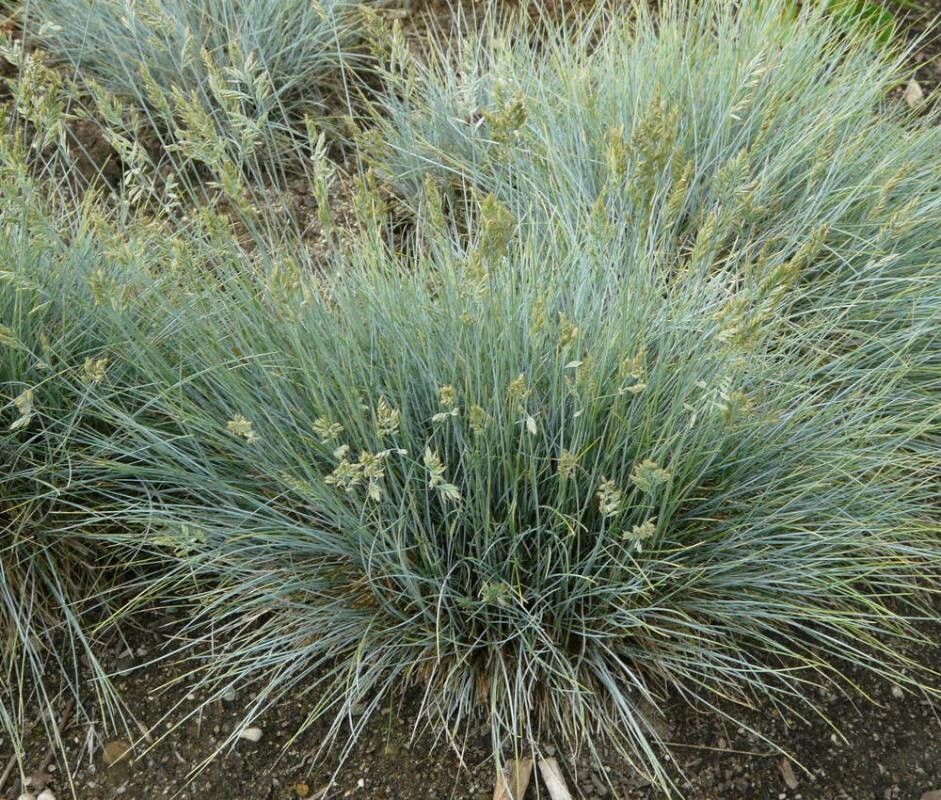
Festuca glauca
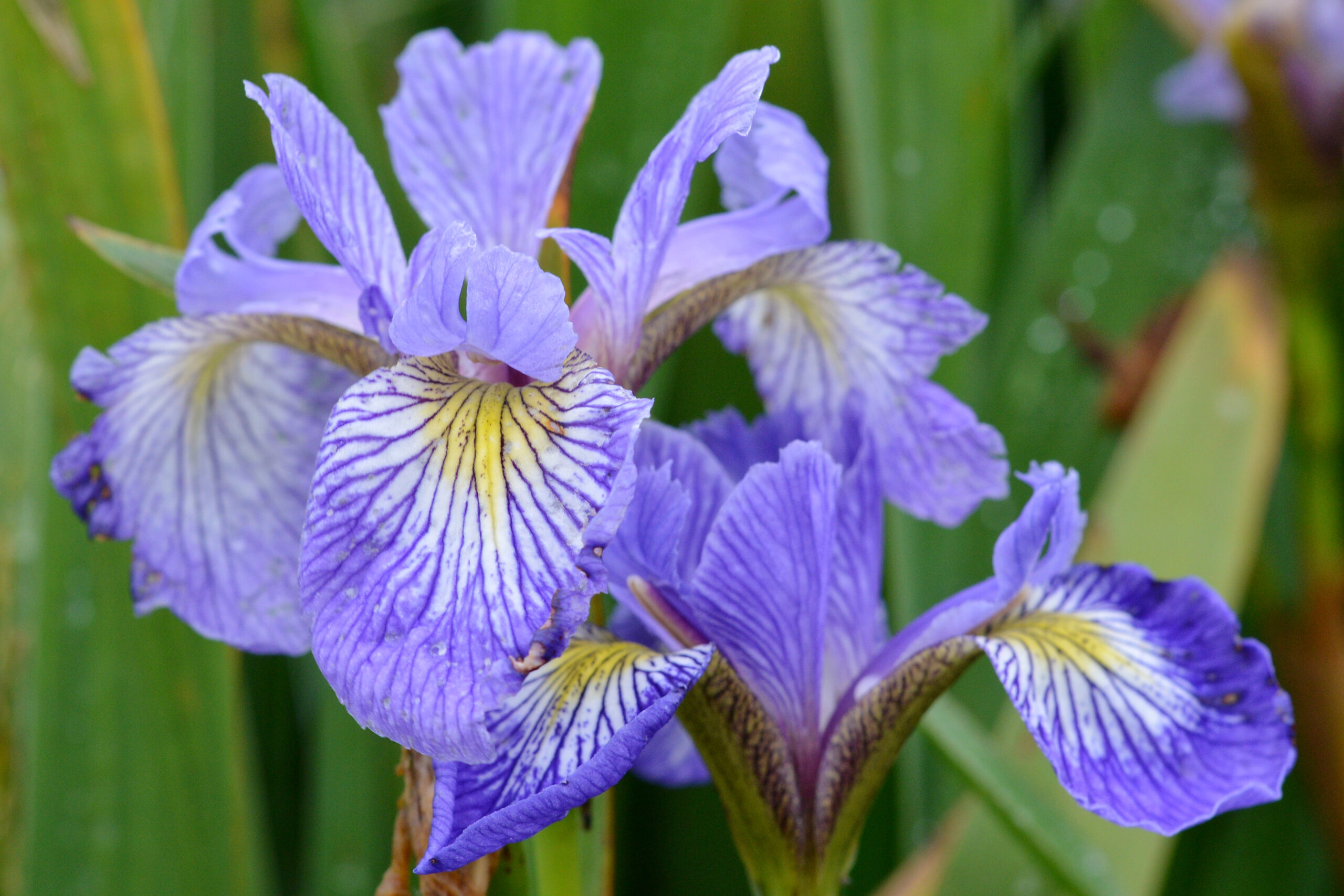
Iris versicolor
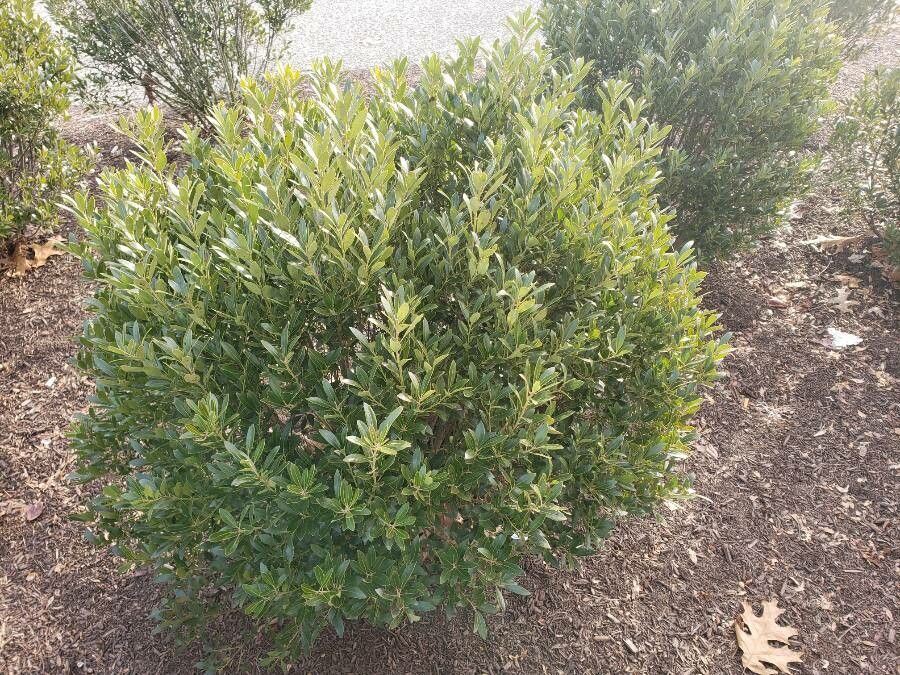
Ilex glabra
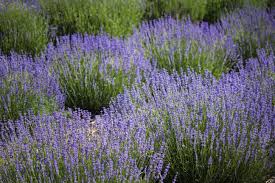
Lavender
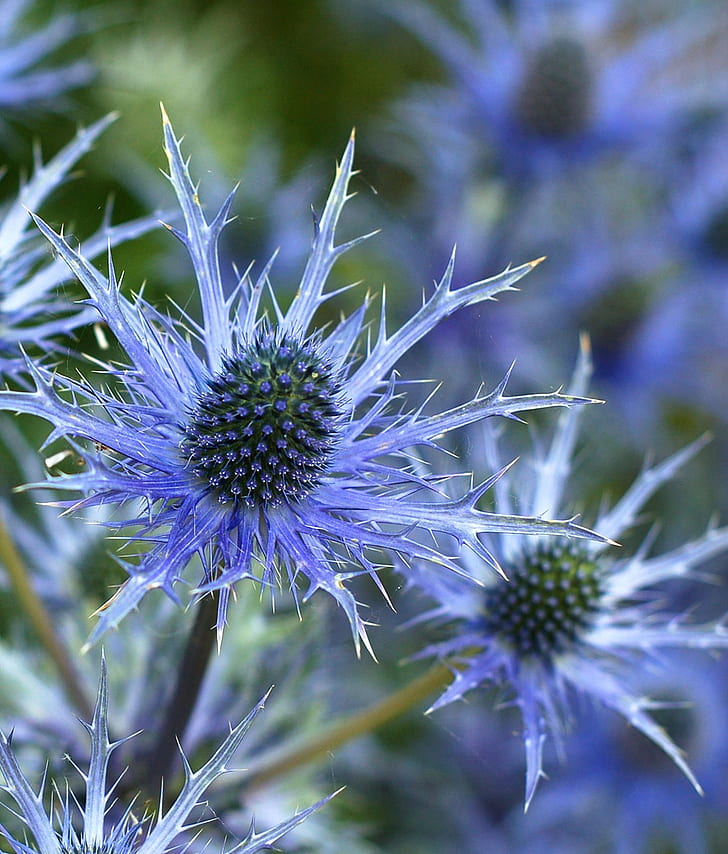
Eryngium planum
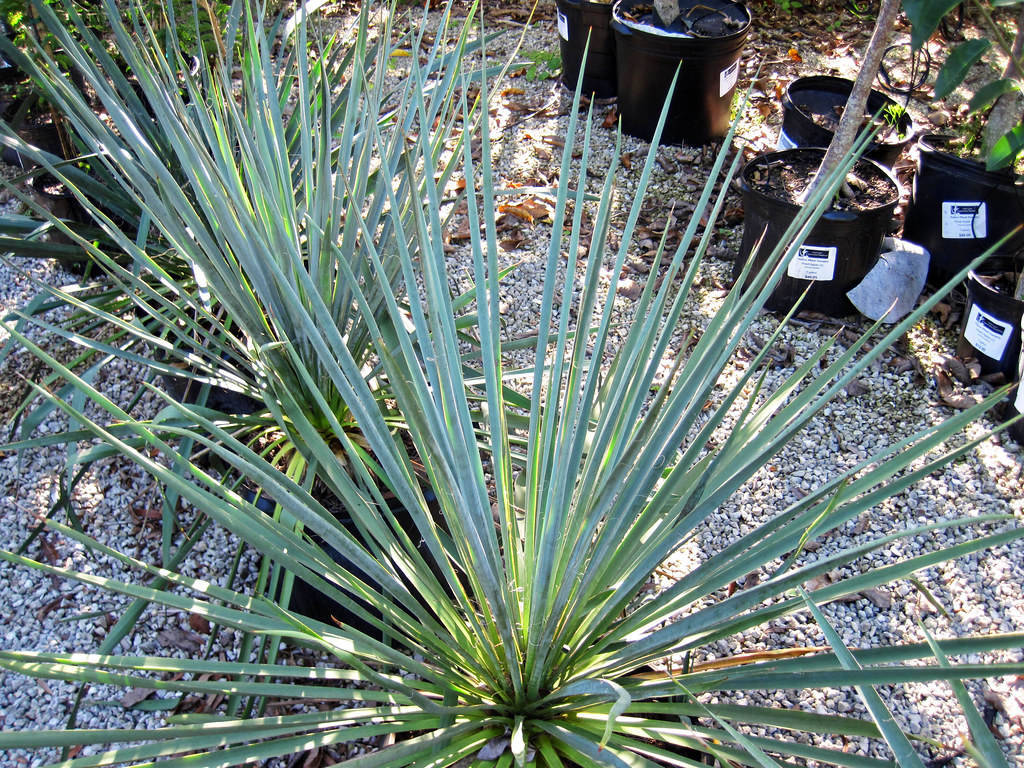
Yucca filamentosa
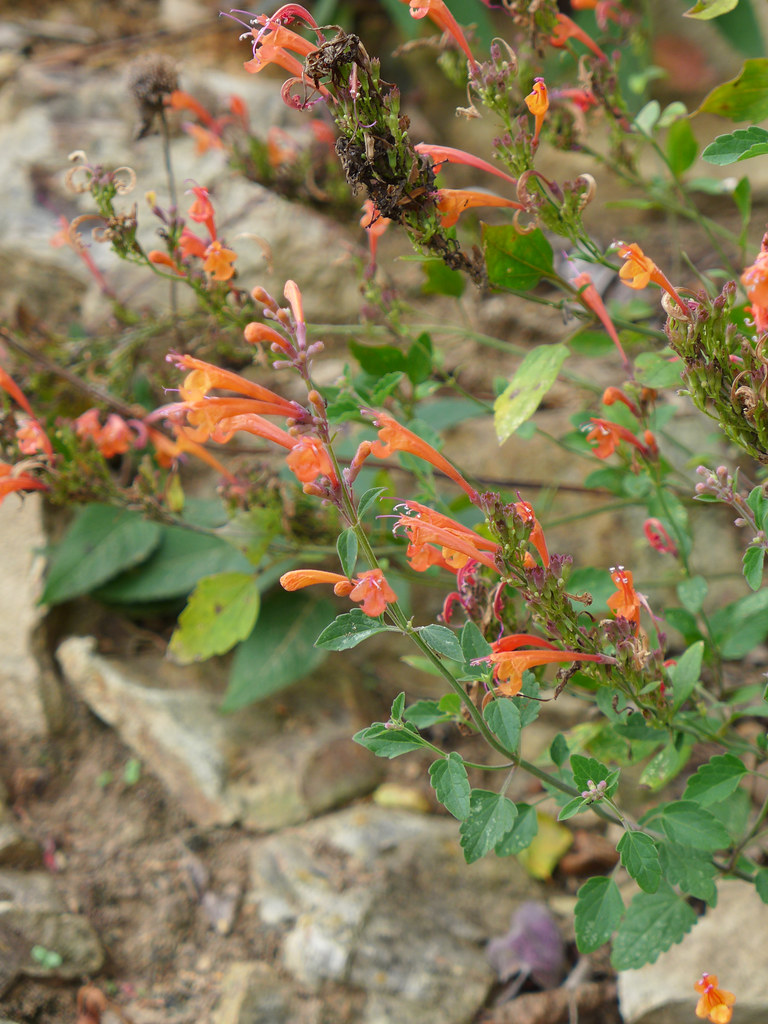
Agastache
In the shadier parts of my garden I am going to try:
Witch Hazels, which are on my mind because they just finished blooming in all their strappy golden winter glory.
Hydrangea arborescens – deer love hydrangeas apparently, but like this native one a lot less. So I’m going to give it a try.
Myrica pensylvanica – This semi- evergreen native shrub gets big, but I”m hoping to put it at the top of the hill for some privacy, and it will hopefully console me over the loss of my sweetbay in Seattle, where the winters are milder.
Camellias- evergreen, blooming at times not so much else is blooming, so many varieties and colors!! Need I say more.
Ilex glabra ‘compacta’ a native holly shrub that’s small, lovely and evergreen. It doesn’t look like the hollies that are imprinted in our minds as part of winter holiday cheer. It looks more like a boxwood with longer leaves. It can provide a really good year round base for your garden.
Physostegia virginiana – this native has profuse pink flowers and supposedly the deer don’t like it much. We’ll see.
Chasmanthium latifolium – a native grass that does well in part shade and has very pretty hanging blooms. It tends to spread, so I’ll use it where I don’t mind if it does this.
Hellebores- Evergreen, and winter blooming!! and totally ignored by deer.
Dryopteris marginalis – Evergreen wood fern. Deer tend to leave ferns well alone.
Crocosmia – I have seen mixed information on how this will do, but I love them and I saw a bag on sale, so I’m going to give it a shot.
Later in the summer I’ll let you know how it goes!
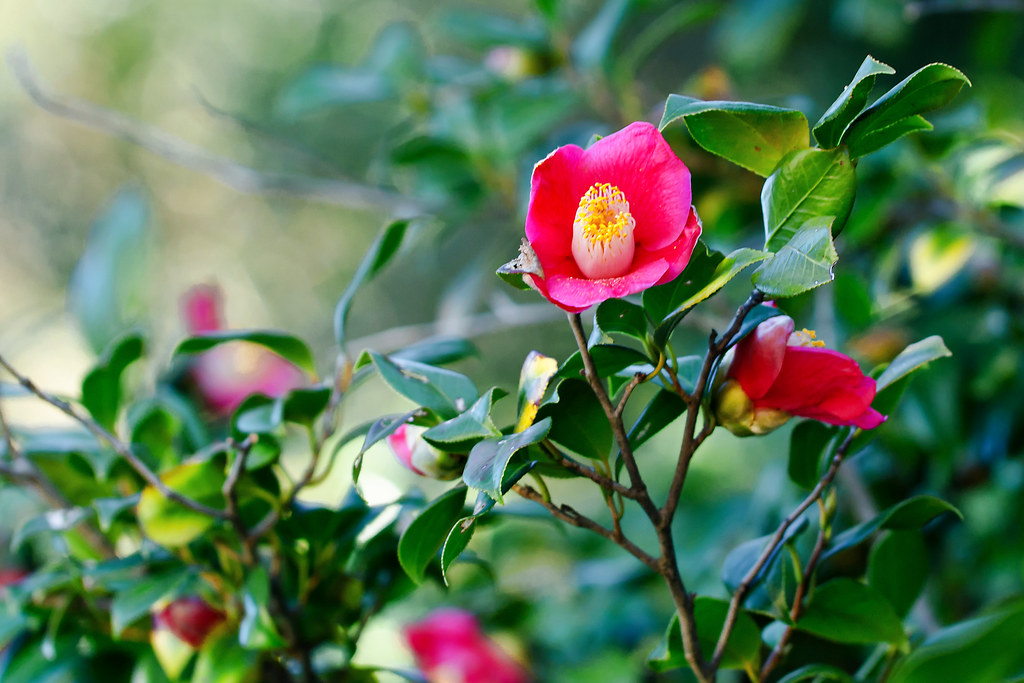
Camellia
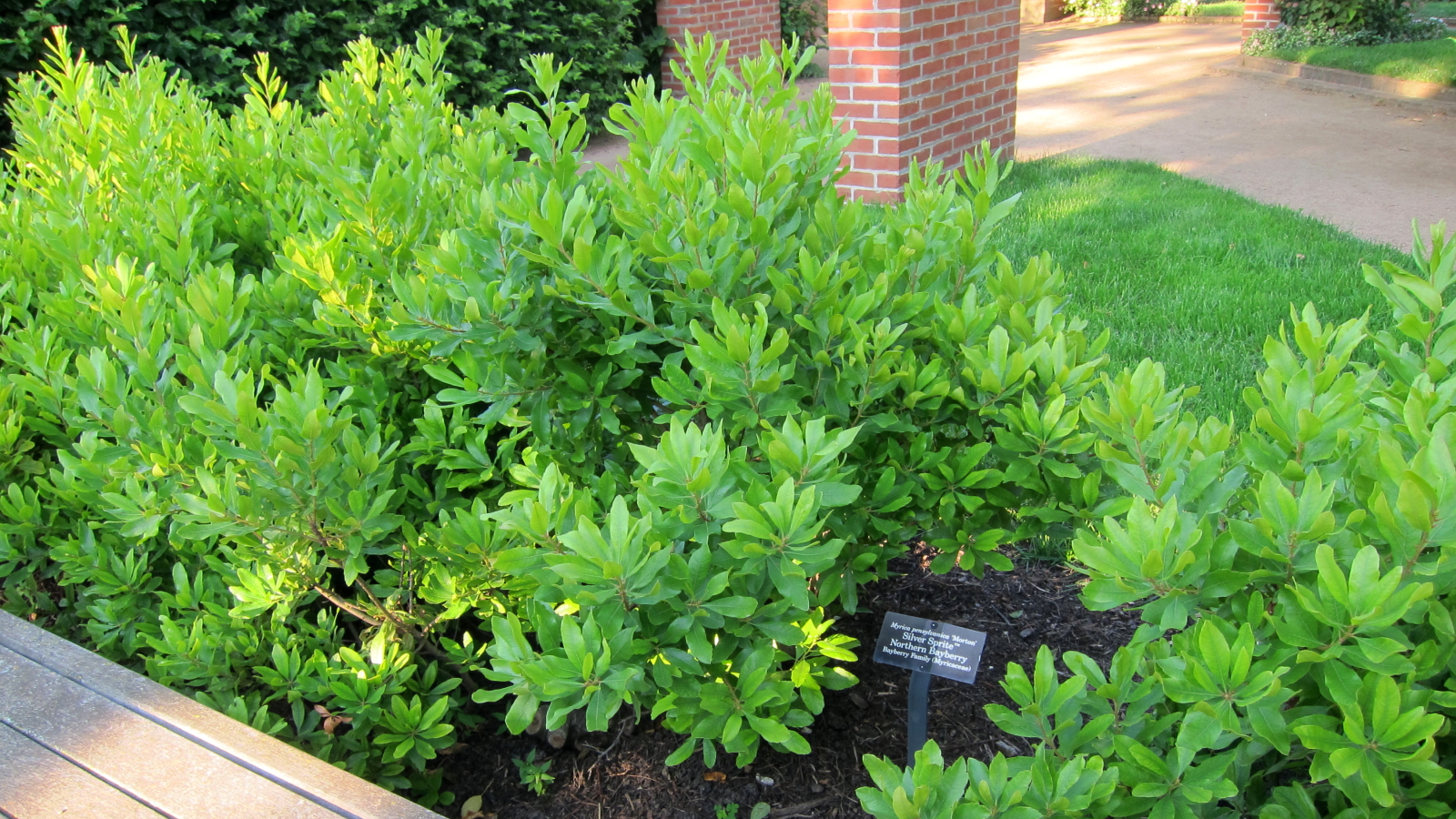
Myrica pennsylvanica
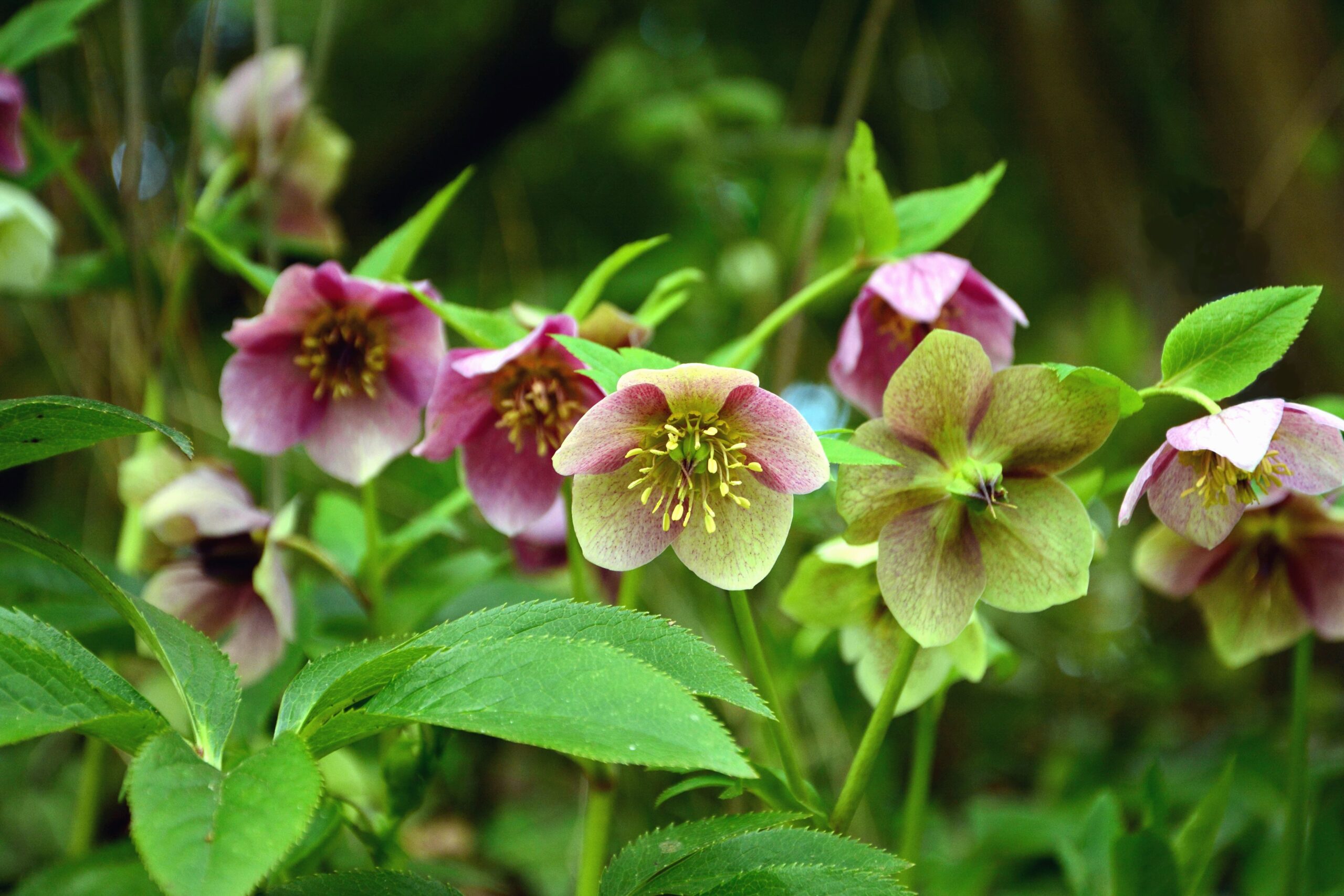
Hellebore
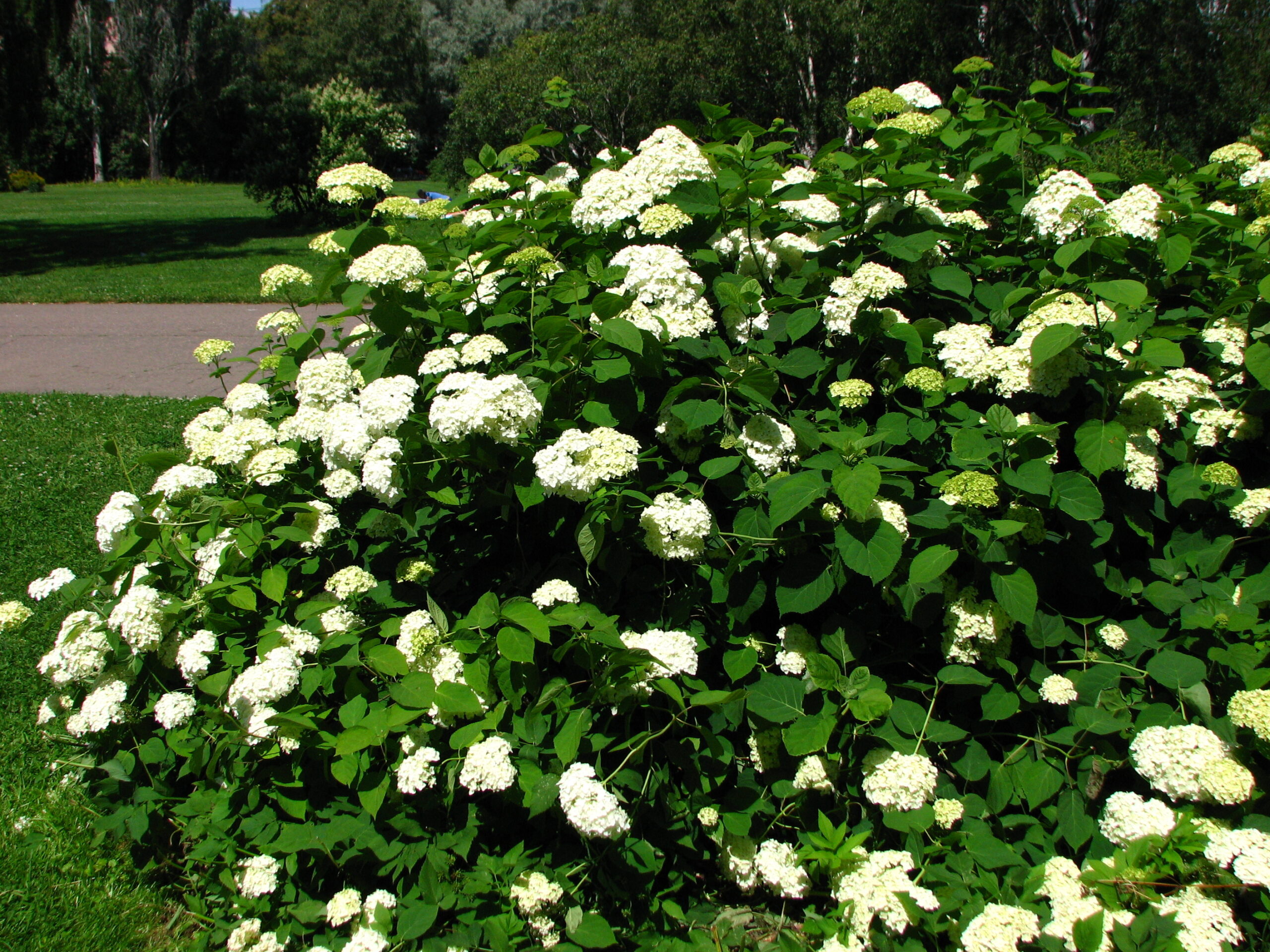
Hydrangea arborescens
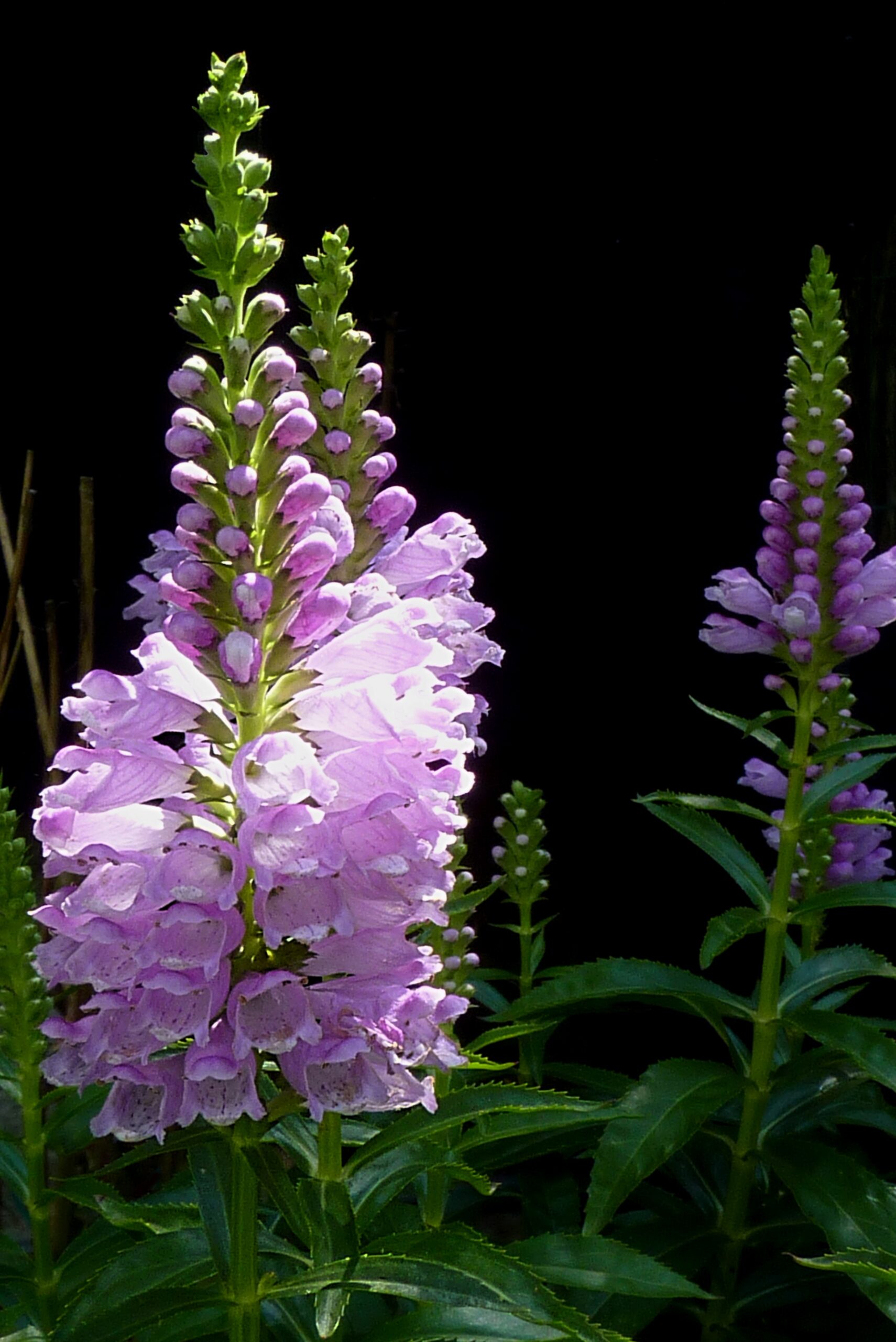
Physostegia virginiana
This spring, if you are blessed with a garden, consider trying some new deer resistant plants. Think about what will give you joy, but also what will light up the face of someone walking by your house. Consider the ecological impact of your planting? Does it increase the species diversity in your neighborhood? Does it welcome pollinators or other beneficial creatures? Does it create a welcome layer of planting between the tree canopy and the ground?
And then take notes. What did the deer eat? what did they leave alone? Next year, adjust accordingly. As you head out to bring in some blooms for your vase, you may still find it challenging to see poetry in the backside of the deer steadily ignoring you as it munches something in the untamed brush a few feet beyond. You may be tempted to remind this lovely creature to go ahead and flee:
דְמֵה לְךָ לִצְבִי אוֹ לְעֹפֶר הָאַיָּלִים עַל הָרֵי בְשָׂמִים
Be as a gazelle or a young stag, upon the hills of spices
But it seems, at least, with some creativity, you can coexist and enjoy the daily unfurling of spring in all its sweetness and glorious splendor.
נַשְׁכִּ֨ימָה֙ לַכְּרָמִ֔ים נִרְאֶ֞ה אִם פָּֽרְחָ֤ה הַגֶּ֨פֶן֙ פִּתַּ֣ח הַסְּמָדַ֔ר הֵנֵ֖צוּ הָרִמֹּונִ֑ים
Let us go early to the vineyards; Let us see if the vine has flowered,
If its blossoms have opened, If the pomegranates are in bloom.



